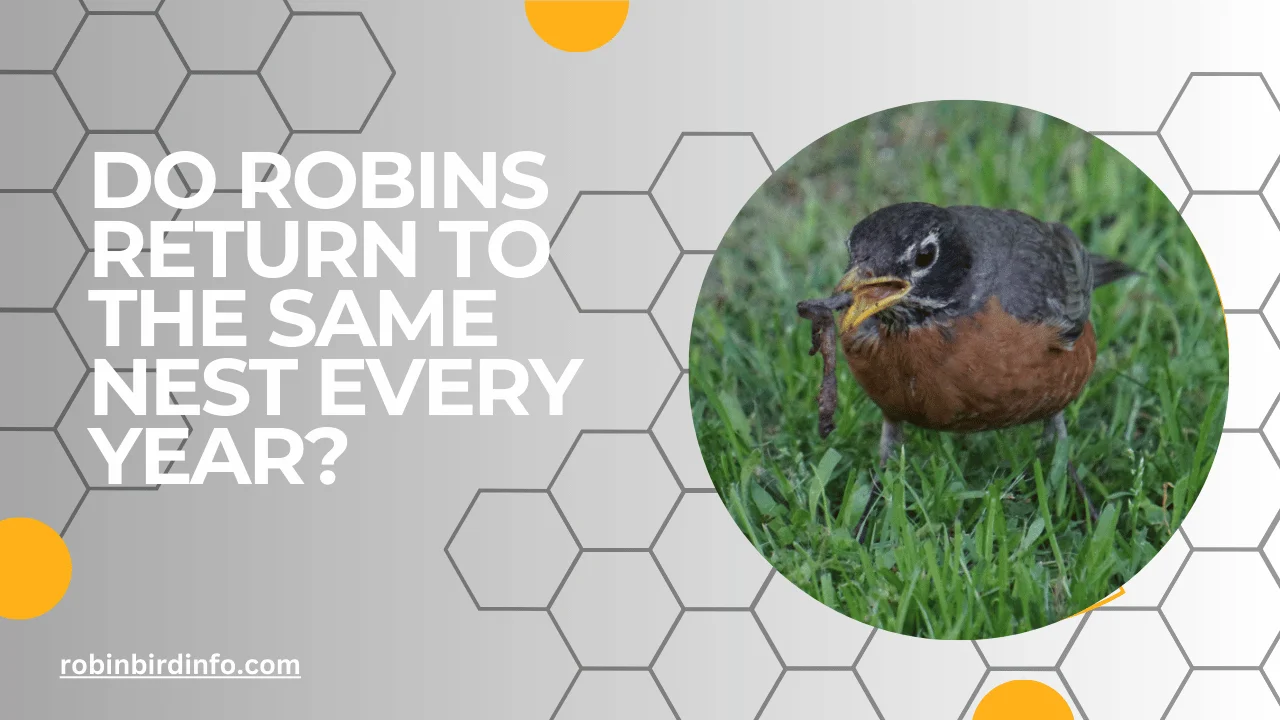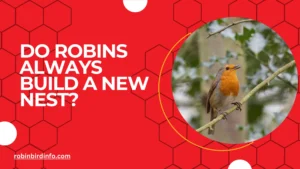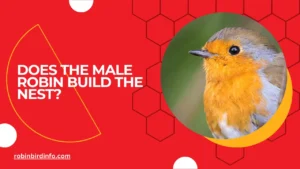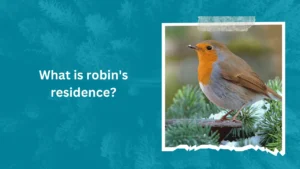Every spring, a familiar melody fills the air – the cheerful song of the American Robin. But have you ever wondered where these feathered friends raise their families?
Do they return to the same cozy nest year after year, building a lifelong home in your backyard? Or do they embark on a fresh nest-building adventure each season?
Understanding Robin nesting behavior isn’t just a trivia tidbit. It sheds light on the fascinating world of bird loyalty and the challenges they face in the modern world. Imagine watching a pair of Robins carefully constructing a nest in your favorite tree, only to find them building anew elsewhere the following spring.
What could be driving this decision? Conversely, what factors might entice Robins to return to the same cherished spot, making your backyard a multi-generational nesting haven?
Buckle up, bird enthusiasts, because this blog post delves into the fascinating world of Robin nesting habits, exploring the science behind site fidelity, the impact of habitat changes, and how we can create backyard sanctuaries that encourage these delightful songbirds to stay awhile.
So, grab a cup of tea, settle in by your window, and prepare to be surprised by the intricate world of Robin nesting!
Contents
Section 1: Nest Site Selection and Construction
Preferred Nest Sites: American Robins typically build their nests in trees, shrubs, or on man-made structures like buildings and fences. They often choose locations that offer protection from predators and harsh weather conditions.
Nest Construction: The female Robin constructs the nest, using a variety of materials such as twigs, grasses, leaves, and mud. She carefully weaves these materials together to form a cup-shaped structure.
Factors Influencing Nest Placement: Several factors influence the placement of a Robin’s nest, including the availability of nesting materials, the presence of predators, and the proximity to food and water sources. Robins often choose nest sites that offer good visibility and easy access for feeding their young.
Section 2: Site Fidelity and Nest Reuse
Site Fidelity: Site fidelity refers to the tendency of birds to return to the same breeding site year after year. While Robins may exhibit some degree of site fidelity, they typically do not reuse old nests.
Factors Influencing Site Fidelity in Robins: Several factors can influence a Robin’s decision to return to a previous nesting site, including the availability of food, water, and nesting materials. However, other factors, such as predation pressure and disturbance from humans, can also play a role.
The Risks and Benefits of Nest Reuse: Reusing a nest can save time and energy, but it also carries risks. Old nests may harbor parasites or be structurally unsound. Additionally, reusing a nest can increase the risk of predation, as predators may be able to locate the nest more easily.
Section 3: The Role of Habitat and Environmental Factors
Habitat Loss and Fragmentation: Habitat loss and fragmentation can significantly impact Robin nesting behavior and site fidelity. The loss of suitable nesting sites, such as trees and shrubs, can force Robins to choose less ideal locations or abandon breeding altogether.
Climate Change: Climate change can affect Robin nesting behavior by altering migration patterns, breeding season timing, and the availability of food and water resources. Changes in weather patterns, such as increased frequency of storms and extreme temperatures, can also impact nest success.
Human Impact: Human activities, such as urbanization, agriculture, and landscaping, can have a significant impact on Robin nesting behavior and the availability of suitable nesting sites. The removal of trees and shrubs, the use of pesticides, and the presence of domestic cats can all negatively affect Robin populations.
Section 4: Conservation Implications
Protecting Robin Nesting Sites: To protect Robin nesting sites, it is important to create bird-friendly habitats by planting native trees and shrubs, providing clean water sources, and avoiding the use of harmful pesticides.
Citizen Science and Nest Monitoring: Citizen scientists can play a vital role in monitoring Robin nesting behavior and identifying potential threats. By reporting nest locations and tracking nesting success, citizen scientists can contribute to conservation efforts.
Education and Awareness: Educating the public about the importance of protecting bird habitats and minimizing human impact on bird populations is crucial. By raising awareness, we can encourage people to take steps to protect Robins and other birds.
Section 5: The Future of Robin Nesting Behavior
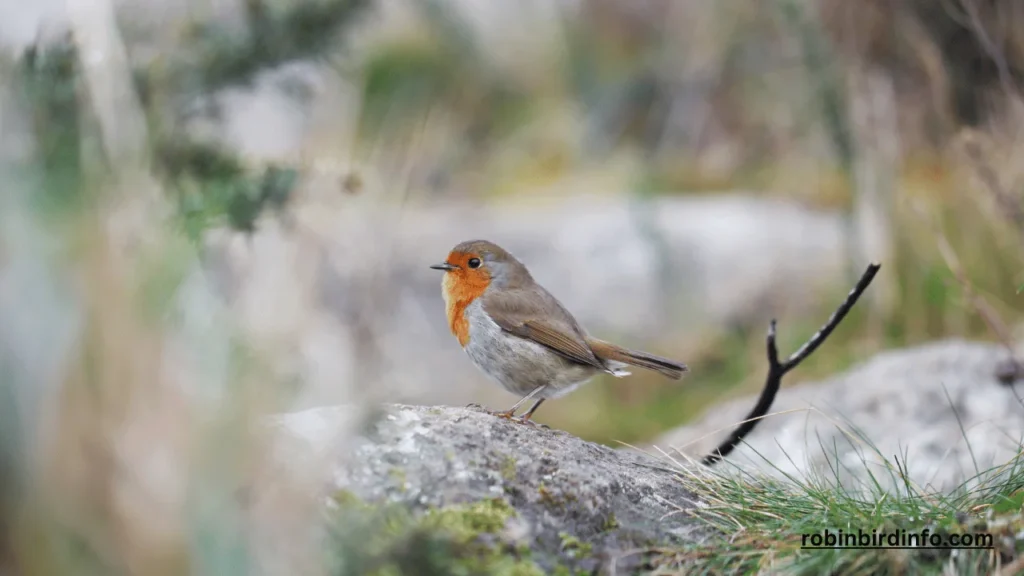
Robins are adaptable birds and can adjust their nesting behavior to changing environmental conditions. However, ongoing habitat loss, climate change, and other human-induced pressures pose significant threats to their populations.
To ensure the future of Robin populations, it is essential to implement effective conservation strategies. By protecting their habitats, reducing pesticide use, and promoting sustainable land-use practices, we can help safeguard these beloved birds and their unique nesting behaviors.
Conclusion
While Robins may not exhibit strong site fidelity and typically build new nests each year, their choice of nesting sites is influenced by a variety of factors, including habitat availability, predator pressure, and climate conditions.
By understanding the factors that shape Robin nesting behavior, we can take steps to protect these birds and their habitats. Through conservation efforts, education, and responsible human practices, we can ensure that future generations can continue to enjoy the beauty and song of these iconic birds.
FAQ’s
Why do Robins build new nests each year?
Robins typically build new nests each year due to several factors, including the accumulation of parasites and debris in old nests, the need to adapt to changing environmental conditions, and the potential for predation.
When do Robins start building their nests?
The timing of nest building varies depending on geographic location and weather conditions. In many parts of North America, Robins begin building their nests in early spring.
How long does it take to build a Robin’s nest?
It usually takes a few days for a female Robin to construct a nest. The exact time can vary depending on factors such as weather conditions and the availability of nesting materials.
What materials do Robins use to build their nests?
Robins use a variety of materials to build their nests, including twigs, grasses, leaves, and mud. They often incorporate soft materials, such as feathers and hair, to line the nest and provide warmth for their eggs.
How many eggs do Robins typically lay?
Robins typically lay 3-4 eggs per clutch.
How long does it take for Robin eggs to hatch?
The incubation period for Robin eggs is approximately 12-14 days.

